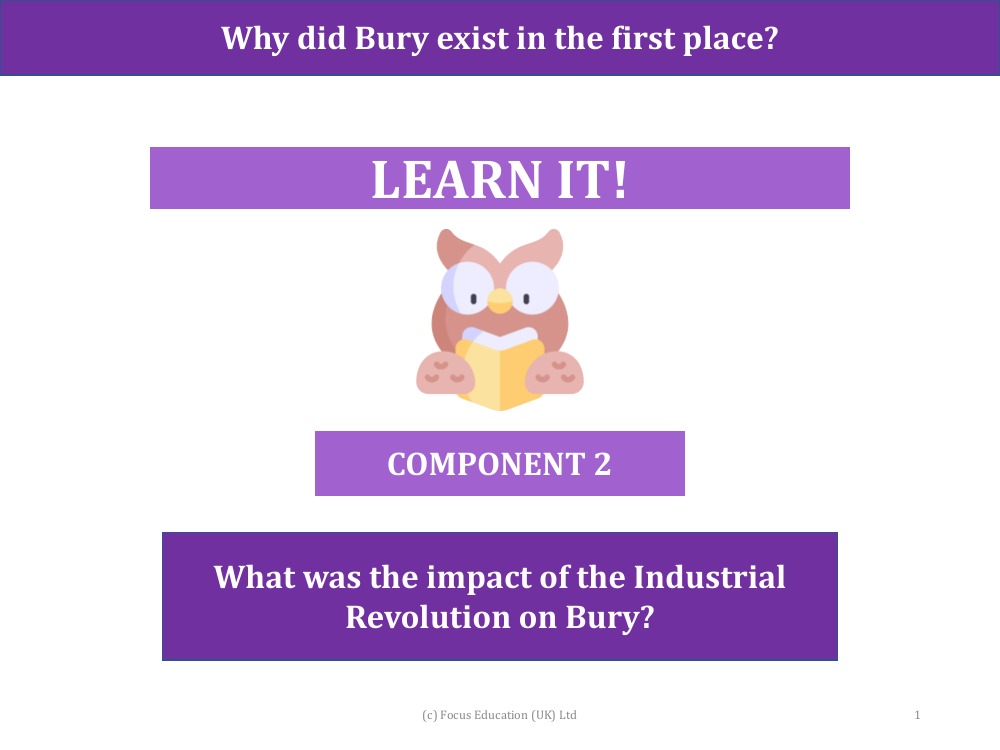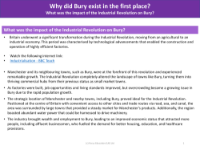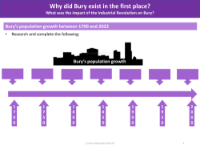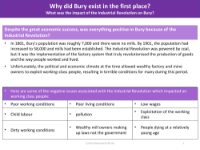What was the impact of the Industrial Revolution on Bury - Presentation

History Resource Description
The Industrial Revolution had a profound impact on the town of Bury, transforming it from a small market town into a bustling commercial centre. As the cotton industry flourished, particularly in Manchester and its surrounding areas, Bury became part of one of the wealthiest regions in the world. The growth of the cotton industry, a key driver of the Industrial Revolution, led to a significant change in Greater Manchester's economy and society. Manchester emerged as a crucial commercial hub, with Bury benefiting from the economic boom. The local population surged as people either travelled to work in the city or relocated to urban areas for the first time. While a minority of the population amassed great wealth, the majority of factory workers had to endure poor working conditions to provide for their families. The aim of the educational unit is to help pupils comprehend both the positive and negative effects of the Industrial Revolution.
Bury's strategic location near Manchester, at the heart of Britain with access to various trade routes, positioned it perfectly for the Industrial Revolution. The region's abundance of water power was ideal for running the machinery in the burgeoning factories. With the rise of industry came job opportunities and enhanced living standards, but also issues like overcrowding due to rapid population growth. Bury's economic status improved, drawing in more people, including prosperous businessmen who contributed to the demand for improved housing, education, and healthcare. However, despite the economic success, not everything was positive. The population of Bury grew from around 7,000 in 1801 to 58,000 by 1901, with mills becoming a common sight. But the factory system that revolutionised production also brought about exploitation and harsh conditions for the working class, including poor working and living conditions, low wages, child labour, pollution, and early mortality rates. The educational content aims to provide a balanced view of the Industrial Revolution's legacy, highlighting both its advancements and the societal challenges it created.






